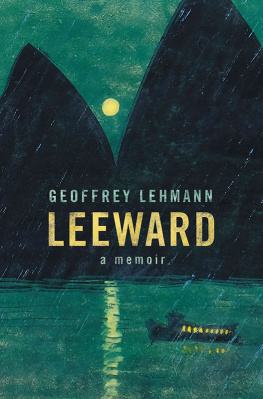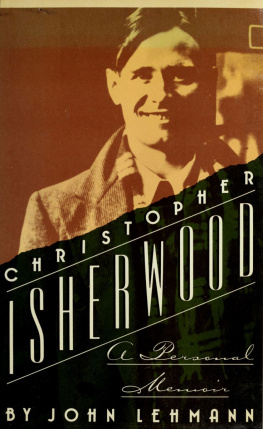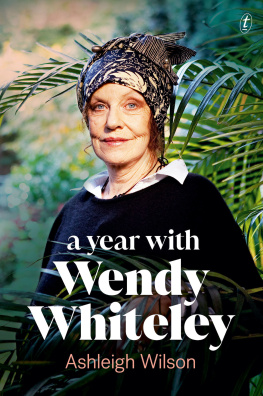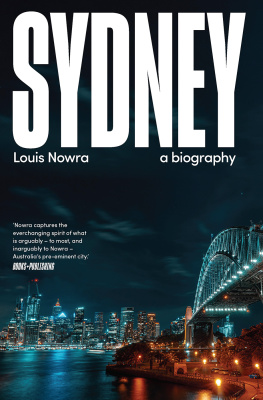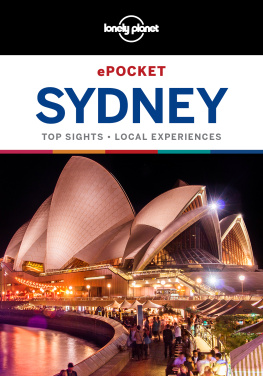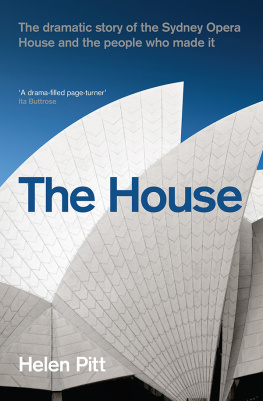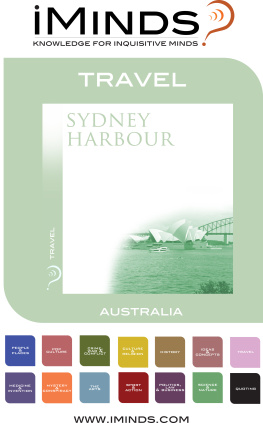
GEOFFREY LEHMANN was born in Sydney in 1940. Aged sixteen, he began an Arts/Law course at the University of Sydney, where he performed indifferently, but co-edited literary magazines with poet Les Murray, with whom he co-published his first book of poetry, The Ilex Tree. He was the first Australian poet to be published by the leading English poetry publisher Faber & Faber, and his Spring Forest was shortlisted for the TS Eliot Prize. His Poems 19572013 (UWAP 2014) won the Prime Ministers prize for poetry. He has edited five poetry anthologies, including Australian Poetry Since 1788, co-edited with Robert Gray (UNSW Press 2011). He is co-author of a leading taxation textbook, was a partner at PriceWaterhouseCoopers, has been involved in the design of Australian tax legislation, and was Chairman of the Australian Tax Research Foundation.

A NewSouth book
Published by
NewSouth Publishing
University of New South Wales Press Ltd
University of New South Wales
Sydney NSW 2052
AUSTRALIA
newsouthpublishing.com
Geoffrey Lehmann 2018
First published 2018
This book is copyright. Apart from any fair dealing for the purpose of private study, research, criticism or review, as permitted under the Copyright Act, no part of this book may be reproduced by any process without written permission. Inquiries should be addressed to the publisher.
ISBN: 9781742236131 (paperback)
9781742244426 (ebook)
9781742248875 (ePDF)

Design Josephine Pajor-Markus
Cover design Lisa White
Cover image High tide full moon Peter Kingston
Cover image photograph and author photograph Piers Laverty
All reasonable efforts were taken to obtain permission to use copyright material reproduced in this book, but in some cases copyright could not be traced. The author welcomes information in this regard.

For Gail
ACKNOWLEDGMENTS
I wish to acknowledge the encouragement and great support given by my publisher, Phillipa McGuinness of NewSouth, and by Kathy Bail, CEO of NewSouth.
I was very lucky to have as my text editor Fiona Sim, who has been exceptional in her many suggestions, and had an uncanny ability to sense exactly where changes were needed.
My wife Gail Pearson suggested more than five years ago that I write this book. Since then she has provided emotional support and constructive criticism during many drafts and revisions.
I also thank the following individuals for reading and critiquing earlier drafts: my children Harry, Lucy and Julia; Gails sisters Cecily and Deborah; my friends Robert Gray (in particular with the structure of the book), Donald Kirby, Ruth Burgess, Rex Burgess and Nick Hordern; and my agent Fiona Inglis of Curtis Brown.
Auguste and Andrea Blackman asked me to contribute to a family memoir about Charles and Barbara Blackman. This book includes an edited extract from that contribution.
I thank Peter Kingston for allowing the use of his wonderful linocut on the cover and Piers Laverty for photographing it.
For permission to use copyright material I gratefully acknowledge the following people: John Eldershaw for permission to use extracts from his fathers memoirs; Sally McInerney for the quotation from her poem Cattle Incident; Professor Margaret Harris for permission to quote from Christina Steads Seven Poor Men of Sydney.
CONTENTS
THE RED-ROOFED COTTAGE
In May 1942 three Japanese midget submarines sneaked into Sydney Harbour; one sank a ferry and the others were depthcharged. There were distant explosions echoing across the water in the night. My sister was summoned from her attic bedroom. I was woken and led from my cot in my parents bedroom on the ground floor. The four of us assembled in the downstairs hallway in the dark. Some time after the detonations stopped we went back to bed. I was not quite two. It is my first memory.
During the war the windows of our house were masked by brown paper, so light could not escape. I watched searchlights sweep across the night sky. My father had a gas mask and sometimes wore a khaki wardens uniform; he was too old to be a soldier, I was told.
Many years before I was born, peering down into the viewfinder of a large, cumbersome Zeiss camera, which hung suspended from his neck on a leather strap, my father recorded what he saw in black and white on large glass negatives. In my early childhood, he was still using this camera to photograph the groups of picnickers he took in his boat the Liberty on weekend daytrips up the Lane Cove River, an estuary of Sydney Harbour. He developed the negatives and prints in his darkroom, lit by a dim red electric globe which fascinated me as a child. Then he sold the photographs to the picnickers, or gave them away. He did not talk about the financial details.
The glass negatives he favoured were already antiquated technology by the 1940s. As a child I sensed there was something beautiful and strange about these obsolete glass objects. None survive, but I have a couple of his group portraits: thirty or more picnickers, adults and children, none of whom I can recognise, sitting and standing in dappled shadow under trees.
Born in June 1940, not long after the start of World War II, I was a statistical outlier. My mother was two weeks short of her forty-fourth birthday. A year or so before, she had miscarried, and my parents believed, perhaps regretfully, that my elder sister Diana would be their only child.
For my first ten years I grew up in Lavender Bay, with the smell of salt water, in houses facing the grey curved eye of the Sydney Harbour Bridge. There was a distant rumble, like thunder, when trains went across. At the end of the day a southerly buster often blew up, and the twenty or so moored yachts and motor launches pointed, like compass needles, down the bay into the wind. On rare occasions our bay was visited by a Chinese junk with varnished planks and red sails like something out of a childs picture book; it came and was gone.
I have no memory of living in my first childhood house, Leeward, a two-storey grey weatherboard building at the head of the bay and backed by a wild escarpment of weeds and lantana. The ground shook when trains empty of passengers emerged from a tunnel set into a hill, then went across a viaduct to railway yards at the waters edge.
Leeward was the rented house my parents Leo and Iris moved into when they married in 1935. My father had been courting Iris for about two years and waiting until shed got some sense. One day he asked how old she was. Her answer shocked him she was almost too old to have children. They married hastily as my father saw it six months later. She was a thirty- nine-year-old spinster and he was a bachelor aged forty-four. When I was in my twenties my father would say: Son, I got married too young the older you are when you get married, the shorter the time you have to put up with it.

